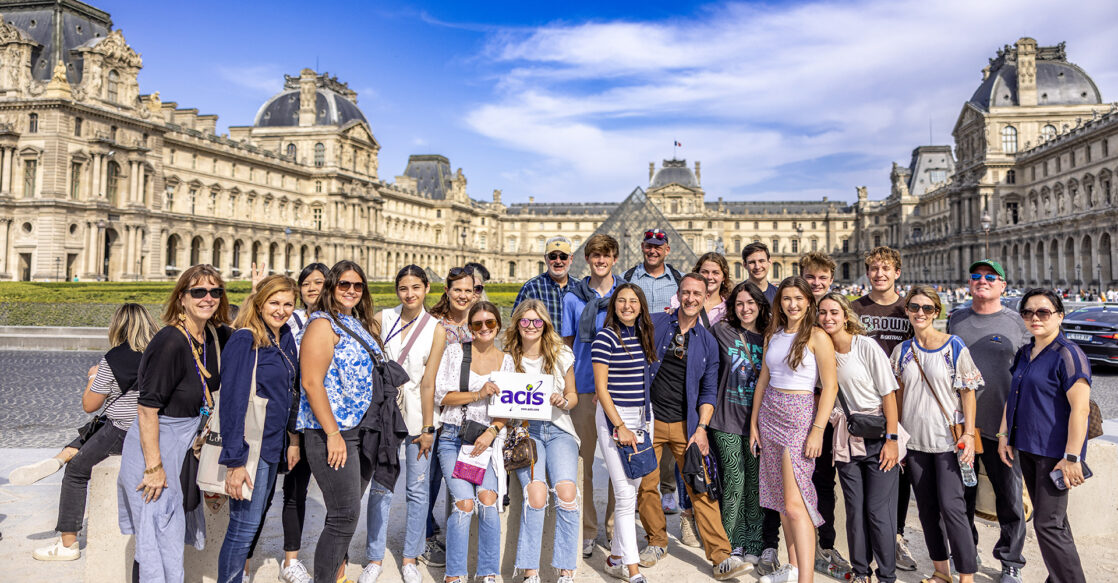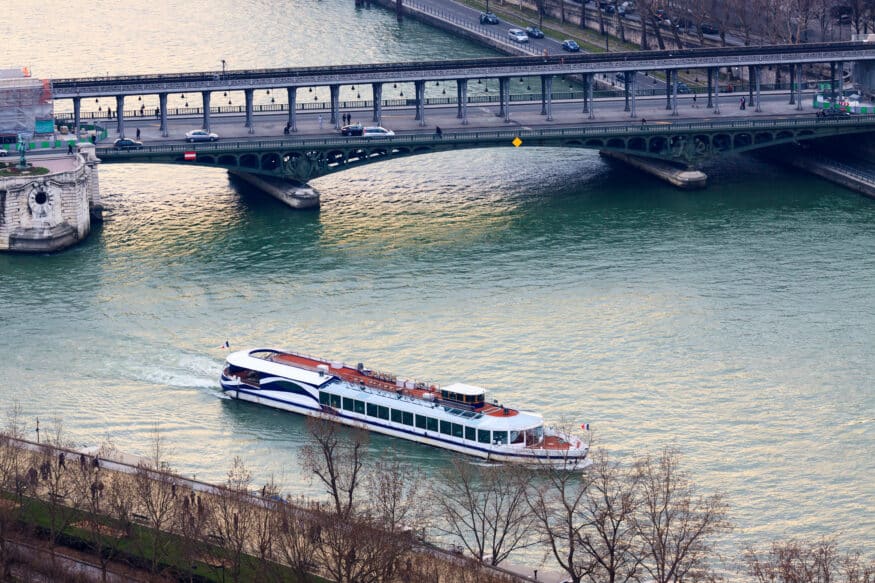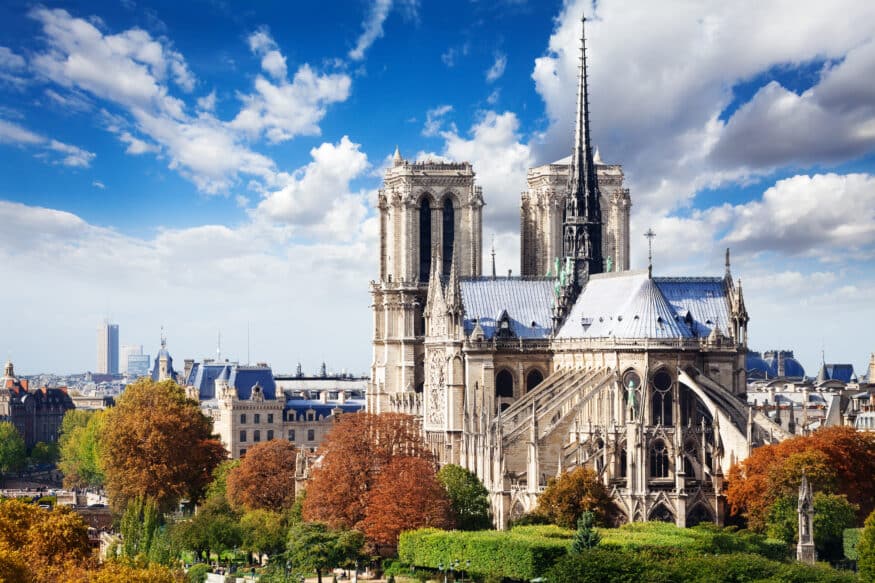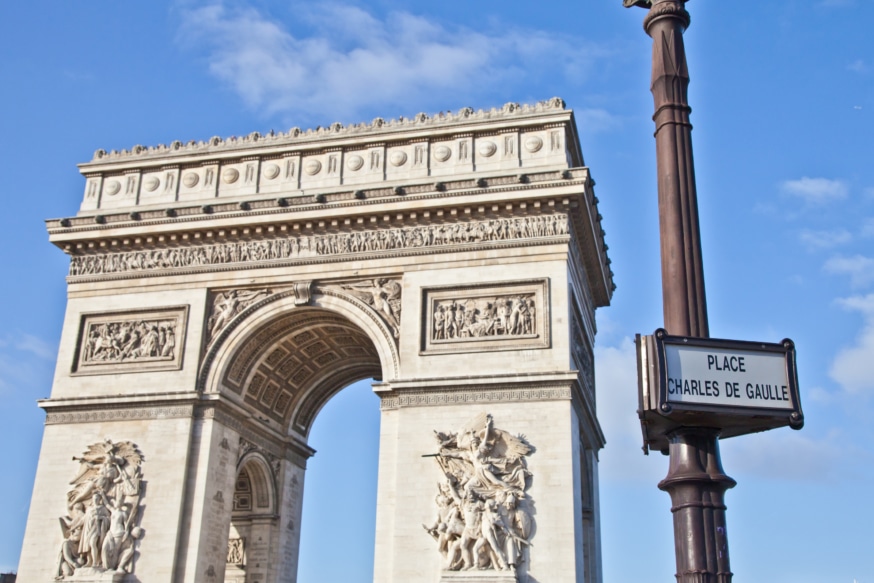Are you inspired to visit Paris after the 2024 Summer Olympics? We’ve heard it’s always a great destination! Before embarking on your ACIS Educational Tour to France, take some time to explore these intriguing facts about the City of Lights and its iconic landmarks.
Explore ACIS Tours in Paris
The Eiffel Tower: More Than Just a Landmark
Dominating the skyline, the Eiffel Tower is one of the world’s most recognizable and cherished monuments. However, its current popularity was not always the case. Designed by architect Gustave Eiffel, construction began in 1887 to prepare for the 1889 World’s Fair. It took a staggering 7,300 tons of iron, 2.5 million rivets, and 60 tons of paint to complete this magnificent structure. Initially, the Eiffel Tower faced strong criticism from Parisians, who labeled it an “iron monster.” In fact, a group of local artists even attempted to legally charge Gustave Eiffel for his creation. Fast forward to today, and the Eiffel Tower is a beloved symbol of Paris, attracting around 7 million visitors each year.
The Louvre: Home to World-Famous Art
Surpassing even the Eiffel Tower in annual visitors, the Louvre Museum is a must-visit for anyone traveling to Paris. Originally built as a 12th-century fortress for King Philip I, it evolved into a royal residence by the 14th century. Following the revolution in 1789, it transitioned into a museum showcasing 537 paintings. Today, the Louvre houses an impressive collection of 380,000 objects, with 35,000 works of art on display. Notable attractions include the stunning Winged Victory sculpture and, of course, Leonardo Da Vinci’s renowned Mona Lisa. As Louvre guide Marcel Widjaja points out, if you spent 30 seconds at each artwork, it would take you nearly 200 days to see them all.

Discover More Art Facts About Paris on the ACIS Blog
The Seine River: Lifeblood of Paris
Coursing through the heart of Paris, the Seine River is as vital to the city as the Eiffel Tower and the Louvre. Originating in the Burgundy region, it flows nearly 500 miles northward before entering the English Channel at Normandy. The river has long served as a crucial trade route. For the French monarchy, it was an essential means of transportation to maintain power in Paris. Today, the Seine continues to play a central role in Parisian life, dividing the city into two bustling banks. This area, known as Île-de-France, boasts a larger population than that of Austria, Belgium, Finland, Portugal, Norway, or Sweden. Along the river, you can explore countless cafes, restaurants, shops, and exceptional museums, like the Musée d’Orsay. A stroll along the riverbank allows you to experience both the city’s rich history and its enchanting present.

Notre-Dame Cathedral: A Gothic Masterpiece
Another iconic symbol of Paris, Notre-Dame Cathedral boasts a rich history. Constructed between the 12th and 13th centuries during the height of the Gothic style, its soaring ceilings, flying buttresses, and intricate gargoyles exemplify the architecture of the time. The cathedral’s stunning Rose Windows, crafted with exquisite stained glass, are also well-known. Over its eight-century history, Notre-Dame has witnessed significant events, from revolutions to royal ceremonies and restoration efforts. Tragically, a massive fire in April 2019 caused extensive damage, leaving both Paris and the world in mourning. However, like a phoenix rising from the ashes, Notre-Dame is set to reopen in December 2024. Be sure to plan a visit to this remarkable site!

The Arc de Triomphe: Victory in Stone
Standing proudly in the heart of one of the world’s most famous roundabouts, the Arc de Triomphe was envisioned by Napoleon in a Roman style as a grand entrance to the city, drawing inspiration from ancient arches to symbolize glory for the imperial army. Interestingly, Napoleon had hoped to marry Marie-Louise of Austria beneath the arch; however, construction had barely begun when the wedding arrived, prompting the creation of a scale model for their procession. After 30 years of construction, the monument was unveiled in 1836, dedicated to the Armies of the Revolution and the Empire. In honor of the Unknown Soldier, a memorial was established at the arch’s center after the devastation of World War I. Each day at 6:30 PM, a ceremony commemorates fallen soldiers, rekindling a flame that has been burning since 1923.

Embark on an ACIS tour of Paris to experience all five of these wonders and more! You’ll delve into the city’s rich history and vibrant culture, guided by knowledgeable Tour Managers who know every corner of the city. Enjoy stays in centrally located hotels, some just steps away from the Arc de Triomphe, and savor authentic local cuisine within Paris’s renowned food scene. Allons-y!




